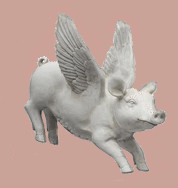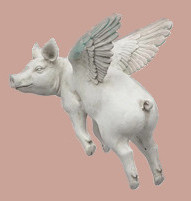A Work in Progress

There's Someone in
the Pigshed . . .
A Residential extension
next door to Dr Jon K Shaw
in the wondrous Orkney Islands



There are some longer term goals brewing for the Truffling the Noosphere community.
Having moved to Orkney in 2021, Jon is now searching for the right spot for a smallholding.
This piece of land will not only provide a dwelling, but also support animals, vegetables and experiments with soil and substrates. Art and Philosophy are important elements of this continuum of inhabiting, nurturing and making.
Most importantly, the site will include a residential/retreat space for artists and writers.

Visitors will have sole use of the converted building, with bed, bath and kitchen as well as a dedicated workspace. Internet access is optional.
You will have regular access to consultations and feedback with Jon – whether on studio practice or editorial advice on writing.
You will also have access to Jon’s considerable library, and to a range of equipment, including top-of-the-range digital photography kit.
Throughout your visit you will be sustained on homegrown vegetables, and (depending on the visitor's dietary preferences) eggs and meat.
The Orkney Islands are extraordinary in myriad ways; a place of inspiration and decompression highly conducive to focus and invention alike.
They are home to some of the most significant archaeological sites in the world. The oldest find dates to ~6800BCE: a roasted hazelnut shell that testifies to Mesolithic nomads passing through. The famous UNESCO World Heritage site of Skara Brae and the standing stones of Stenness are older than the pyramids at Giza; the ongoing dig at the Ness of Brodgar continues to fascinate and confound; and the archipelago . Hugely significant Pictish and Viking sites and artefacts are also found. The islands have an important place in Jacobite history, and hold a number of interesting WW2 coastal defence buildings, as well as remains of scuttled German naval fleets.
Having been closely tied to North Sea Oil work, and roundly rejecting uranium mining in the 1970s, the islands have invested heavily in sustainable energy, remaining a place of innovation and standing as a net exporter of renewables, producing 130% of the electicity it uses.
The islands support a boggling array of bird life – puffins, long-eared owls, curlew, lapwings, sea eagles, waxwings and murmurations of starlings are personal favourites. As well as offering frequent sightings of orca, porpoise and seals, there are also otters and stoats, and even the Orkney vole, speciated from common voles migrated from Belgium five thousand years ago.
Trees and woodland are very scarce on the islands, covering less than 0.1%.
Large parts of the islands are designated Dark Skies areas, meaning stargazing even with the naked eye is remarkable and the northern lights are frequently visible.
They are home to some of the most significant archaeological sites in the world. The oldest find dates to ~6800BCE: a roasted hazelnut shell that testifies to Mesolithic nomads passing through. The famous UNESCO World Heritage site of Skara Brae and the standing stones of Stenness are older than the pyramids at Giza; the ongoing dig at the Ness of Brodgar continues to fascinate and confound; and the archipelago . Hugely significant Pictish and Viking sites and artefacts are also found. The islands have an important place in Jacobite history, and hold a number of interesting WW2 coastal defence buildings, as well as remains of scuttled German naval fleets.
Having been closely tied to North Sea Oil work, and roundly rejecting uranium mining in the 1970s, the islands have invested heavily in sustainable energy, remaining a place of innovation and standing as a net exporter of renewables, producing 130% of the electicity it uses.
The islands support a boggling array of bird life – puffins, long-eared owls, curlew, lapwings, sea eagles, waxwings and murmurations of starlings are personal favourites. As well as offering frequent sightings of orca, porpoise and seals, there are also otters and stoats, and even the Orkney vole, speciated from common voles migrated from Belgium five thousand years ago.
Trees and woodland are very scarce on the islands, covering less than 0.1%.
Large parts of the islands are designated Dark Skies areas, meaning stargazing even with the naked eye is remarkable and the northern lights are frequently visible.
Having been closely tied to North Sea Oil work, and roundly rejecting uranium mining in the 1970s, the islands have invested heavily in sustainable energy, remaining a place of innovation and standing as a net exporter of renewables, producing 130% of the electicity it uses.
The islands support a boggling array of bird life – puffins, long-eared owls, curlew, lapwings, sea eagles, waxwings and murmurations of starlings are personal favourites. As well as offering frequent sightings of orca, porpoise and seals, there are also otters and stoats, and even the Orkney vole, speciated from common voles migrated from Belgium five thousand years ago.
Trees and woodland are very scarce on the islands, covering less than 0.1%.
Having been closely tied to North Sea Oil work, and roundly rejecting uranium mining in the 1970s, the islands have invested heavily in sustainable energy, remaining a place of innovation and standing as a net exporter of renewables, producing 130% of the electicity it uses.